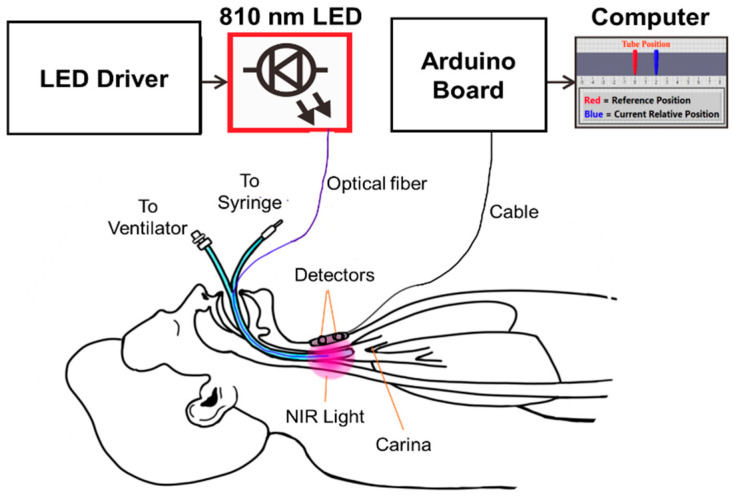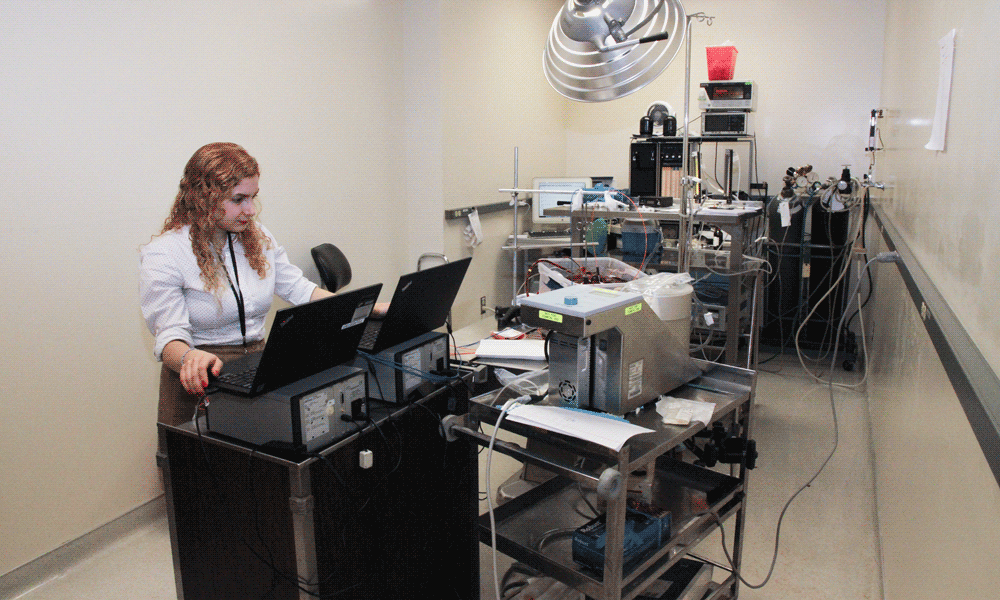Real-time Monitoring of Endotracheal Tube Placement
An endotracheal tube (ETT) is a pliable plastic duct placed into a patient’s trachea to facilitate mechanical ventilation when a person is unable to breath on their own. This occurs in situations such as when anesthesia or substantial sedation is administered during surgery, when a patient is in the intensive care unit, or when a patient suffers from some other injury or pathologic process. Correct positioning of the ETT inside the trachea to fully ventilate the lungs is critical, as improper placement of the ETT may cause severe complications or even death. Once positioned, the ETT must be kept in the appropriate position. In addition, there are specific patient circumstances, especially in newborns and children, that increase the critical nature of maintaining the proper placement of an ETT. Displacement of the ETT can result in mainstem bronchi ventilation and primary aeration of only one lung. Often, identifying this difficulty happens later in a patient’s clinical course and can be associated with significant complications. In its worst-case scenario, ETT displacement can lead to extubation of the patient, which, even if identified quickly, can lead to serious complications and death. In each of these types of situations, a monitoring system to easily and continuously confirm ETT position would provide an important adjunct to clinical care and would have the ability to improve patient outcomes and limit patient complications.

To meet this need, investigators at the Biophotonics Laboratory are developing an optical system, Opt-ETT, for the real-time monitoring of ETT placement and to provide immediate feedback in the event of ETT displacement. The Opt-ETT consists of a side-firing optical fiber attached to the ETT for trachea illumination and a sticker with multiple photodetectors placed on the chest skin above the tube for light detection. Tissue is an optically turbid medium in which light waves attenuate exponentially with the distance traveled. As the tube moves, photodiodes detect changes in the intensity of light transmission through the tracheal tissue, and a LabVIEW program generates an alarm if the displacement exceeds a preset value.
Fig. 1: Principle schematics of the optical sensor (Opt-ETT) system and the intended use for endotracheal tube (ETT) monitoring.
Selected Publications
Ramzan Ullah, Karl Doerfer, Pawjai Khampang, Faraneh Fathi, Wenzhou Hong, Joseph E Kerschner, Bing Yu, "Real-Time Optical Monitoring of Endotracheal Tube Displacement," Biosensors 2020, 10(11), 174
View more Biophotonics research
 Research | Facilities | People
Research | Facilities | People


